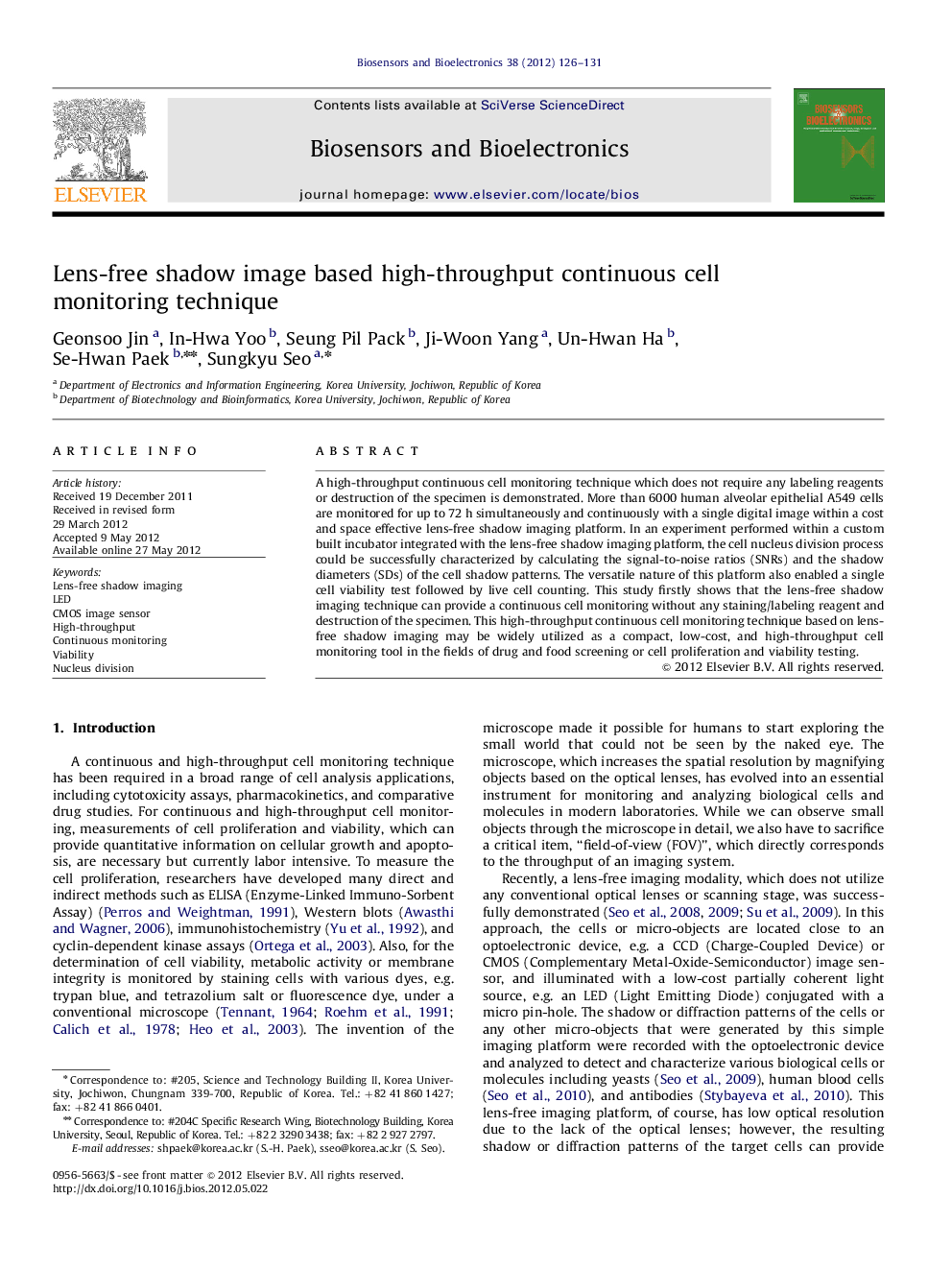| Article ID | Journal | Published Year | Pages | File Type |
|---|---|---|---|---|
| 867279 | Biosensors and Bioelectronics | 2012 | 6 Pages |
A high-throughput continuous cell monitoring technique which does not require any labeling reagents or destruction of the specimen is demonstrated. More than 6000 human alveolar epithelial A549 cells are monitored for up to 72 h simultaneously and continuously with a single digital image within a cost and space effective lens-free shadow imaging platform. In an experiment performed within a custom built incubator integrated with the lens-free shadow imaging platform, the cell nucleus division process could be successfully characterized by calculating the signal-to-noise ratios (SNRs) and the shadow diameters (SDs) of the cell shadow patterns. The versatile nature of this platform also enabled a single cell viability test followed by live cell counting. This study firstly shows that the lens-free shadow imaging technique can provide a continuous cell monitoring without any staining/labeling reagent and destruction of the specimen. This high-throughput continuous cell monitoring technique based on lens-free shadow imaging may be widely utilized as a compact, low-cost, and high-throughput cell monitoring tool in the fields of drug and food screening or cell proliferation and viability testing.
► Lens-free shadow imaging based continuous cell monitoring technique. ► More than 6000 cells monitored continuously and simultaneously for up to 72 hrs. ► Nucleus division and cell viability could be quantified by SNR and SD. ► Not requiring any labeling or staining reagents. ► Useful in food and drug screening or cell proliferation and viability applications.
